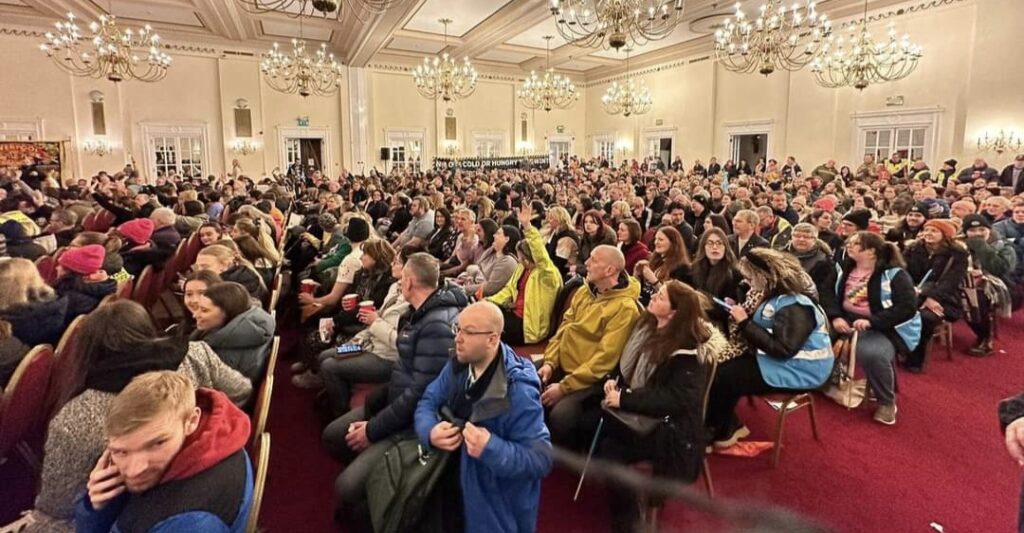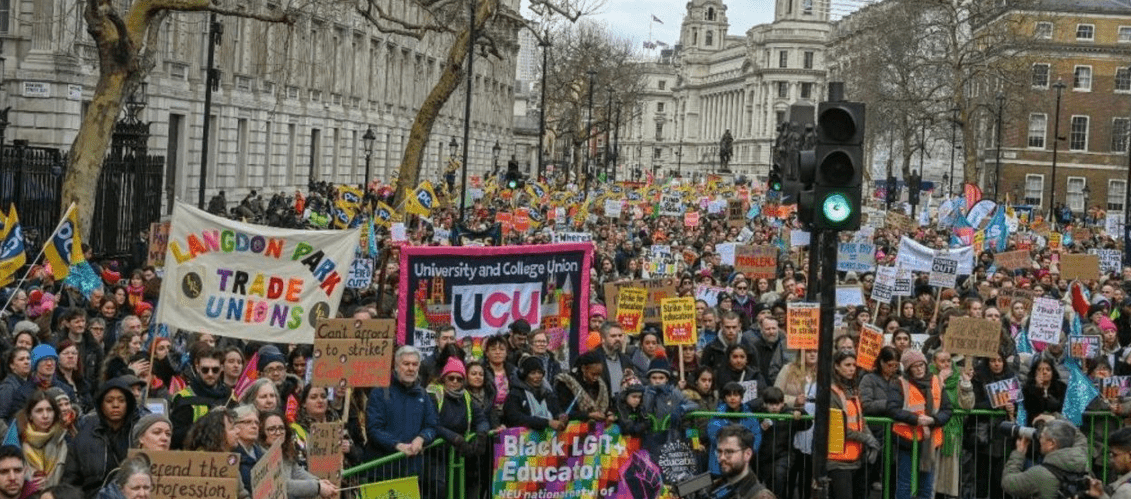By John Pickard, member of Central Essex District NEU
The London demonstration may have been the largest, somewhere between 40,000 and 50,000, but there were many smaller events in dozens of small towns and cities up and down the country. With rallies numbering anything from a few hundred to thousands, hundreds of thousands of trade union members were on these rallies demanding an end to anti-union legislation and for the government to properly fund pay settlements in the public sector.
The rallies included members of PCS, UCU, NEU, CWU, rail and other unions, all on strike at the same time, in the first coordinated strike action of its time in modern British history and it is an important turning point in trade union struggles.
From Newcastle and Carlisle in the North to Hastings and Brighton in the South, trade unionists, many of them members of my union and on strike for the first time, expressed their anger at the government’s failure to properly fund education and public services. The strike of teachers closed well over 20,000 schools and it would have been a lot more, but for the fact that the primary sector is not so much affected, because union organisation there is weaker.

Resounding majorities in favour of strike action
In my region, the demonstration in Chelmsford, was around five hundred strong, and it was only one of four in the county, the others being at Southend, Harlow and Colchester. There is a lot of anger among teachers, not only on wages, although that is a central issue, but on workload. As one of the speakers at the rally noted, the shortage of skilled teacher and support staff has a serious knock-on effect on the workload of teachers everywhere and a regular working week of over 50 hours is quite commonplace.
It is hardly surprising that the NEU ballot produced such a resounding majority for a strike. In England teachers voted 90.4% to strike on a 53.3% turnout; in Wales it was 92.3% to strike on a 58.1% turnout. Although support staff in Wales passed the artificial government threshold, with a 51% turnout, voting over 88% to strike, unfortunately the threshold wasn’t reached in England. It is a disgrace that the threshold is applied at all, because there is no threshold applied to the election of MPs or company directors, yet the anger of trade union members is clear, when well over 80% of those voting support strike action.
While the government has thrown money at its friends, through covid contacts, and has not made the slightest attempt to stem the multi-billion pound tax-dodging that is rife through British overseas territories, it has restricted expenditure on education year on year. Even according to the Financial Times, “From 2010 to 2019, real-terms school funding also fell 9 per cent and will only return to 2010 levels next year.”
Teachers pay has fallen dramatically in real terms
Taking into account inflation and higher superannuation payments (and for a worse pension), teachers have suffered a cut in their real take-home pay of more than 15% since the Tory-LibDem coalition was elected in 2010. There is no prospect, on present government funding and trends, for anything other than more cuts in teachers’ living standards. No wonder, then, that the number of those entering teaching this academic year fell 20 per cent compared to 2021-22.

As was pointed out at the rally in Chelmsford, the government’s only answer to what is a serious education crisis is to attempt to limit the rights of teachers to go on strike. The new legislation going through parliament will put power in the hands of local authorities and academy chains – some of them employers as big as local authorities – to insist on a minimum ‘safe’ service level in a school.
It could put theoretically management in a position where they could name who they want to stay in work while their colleagues go on strike. They could, for example, nominate trade union reps. It is a disgrace that in a modern so-called ‘democracy’ like ours that the right to strike is being curtailed in this way.
But teachers have had enough, and that is why they are determined to fight for better. The strike on February 1 is only the first of many one-day strikes. The next is on February 14, to be followed by a series of rolling regional strikes throughout March. A fighting campaign by the NEU will increase the strength of the union and the activity and participation of its members. In the last two weeks alone, the NEU has recruited 40,000 new members. They have joined because they want a union that provides a fighting lead.
The strike and rallies on Wednesday must be the starting point for a prolonged and militant fight for decent pay and conditions for teachers and all workers. For however long it takes.
- No more cuts in living standards!
- For a fully funded pay rise in line with living costs!
- Proper funding for education!
- No more anti-union legislation!
Editorial note: send your strike, demonstration and rally reports to editor@left-horizons.co.uk



